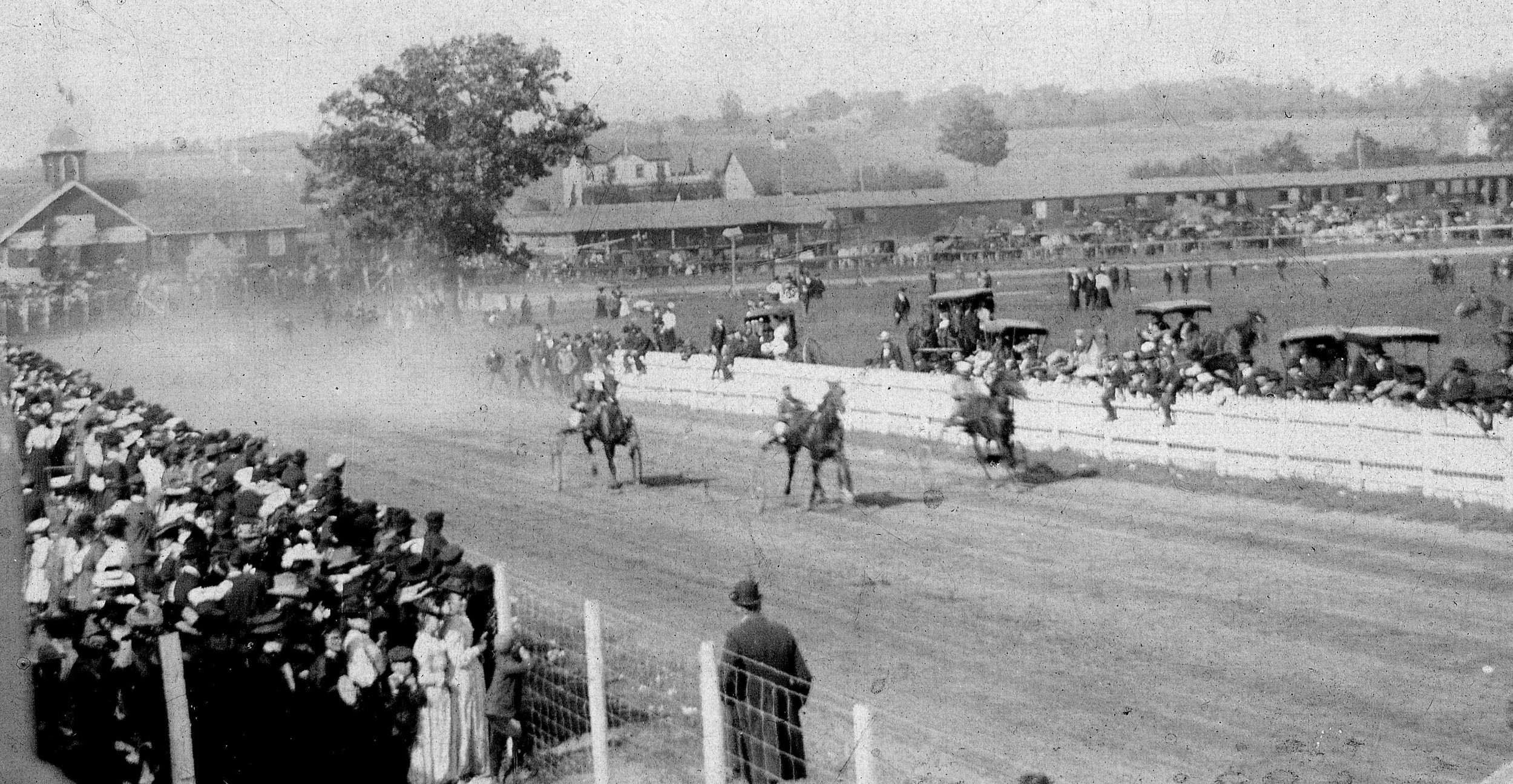The Old Baraboo Race Track
by Bill Schuette
This 1905 photo was taken on the current fairgrounds when it featured a racetrack.
Back in the late 1860s, before the eve of the baseball era had arrived, one of the significant forms of entertainment in Sauk County was horse racing. Other amusements at the time were skating and dancing, but they catered primarily to the young. Horse racing was a sport which attracted all ages and classes.
In a paper read at the 1924 Old Settlers’ meeting, Harry Slye recalled some of the memories of his youth regarding the sport. He recalled that “The old and the young, the well-to-do and the poor, the good and the bad, all mingled and jostled their way together in a rather rough but good natured crowd and all for the time being at least were on a common level.”
Up until then, races were held in various locations, none really suited for the occasion. One year it might be in a farmer’s meadow, the next year on a county highway. Village streets and even the frozen surface of Devils Lake were venues for the event.
Some of the prominent horse-men of Baraboo decided they needed a more suitable and permanent location for these races, and place it on a level where it would be self-supporting. A 160 acre site was located on the east side of town, between Elizabeth and Camp Streets, bordered by 4th and 8th Streets, and was described as being a wild land, covered with underbrush and small trees. It also included a small pond, where stagnant water stood year ‘round. The land was cleared and graded and a half mile oval racetrack was constructed which was enclosed with a high board fence.
A main gate, grand stand and judge’s stand were erected, and it was noted that, “many dollars changed hands in those old days, not from the gate receipts alone, but mostly the money lost and won on the races.”
Slye wrote, “The scenes at those old time races were in a class all by themselves. The talk was generally boisterous, boastful and often accompanied by profanity, yet nobody ever took any offense at it, but seemed to accept it as part of the game.” He noted that public betting was the primary reason for the races, and that men would be seen mingling among the crowd, “shaking a fist full of bills in their faces, and offering bets of all the way from even money to odds of ten to one on their favorite horse.”
The men who participated in the races, either as horse owners, drivers or attendants, were some of the most popular and respected people in the city for their importance. Slye noted that, “To us small boys especially, their importance was marvelous, and our admiration for them knew no limits. In our comparison to them, all the leaders of the late Civil War would have attracted no more of our attention.”
Even though many of the horses—with names like Old Harry, Red Rover, and Icicle—looked similar in size and color, die hard racing fans seemed to be able to identify their favorite which they would cheer on. Of course the fact that they may have placed a bet on the outcome, probably encouraged much of their enthusiasm.
“These men thoroughly understood horse nature, and how to handle and take care of them, and apparently they thought as much of a horse as they did of themselves. While at times they would seemingly crowd a horse to the limit of his speed, still they were careful not to abuse one,” wrote Slye.
By the 1870s, the old Baraboo racetrack had become outdated. The Sauk County Agricultural Society had established the current fairgrounds, which also had a racetrack, and the former was dismantled and abandoned.


